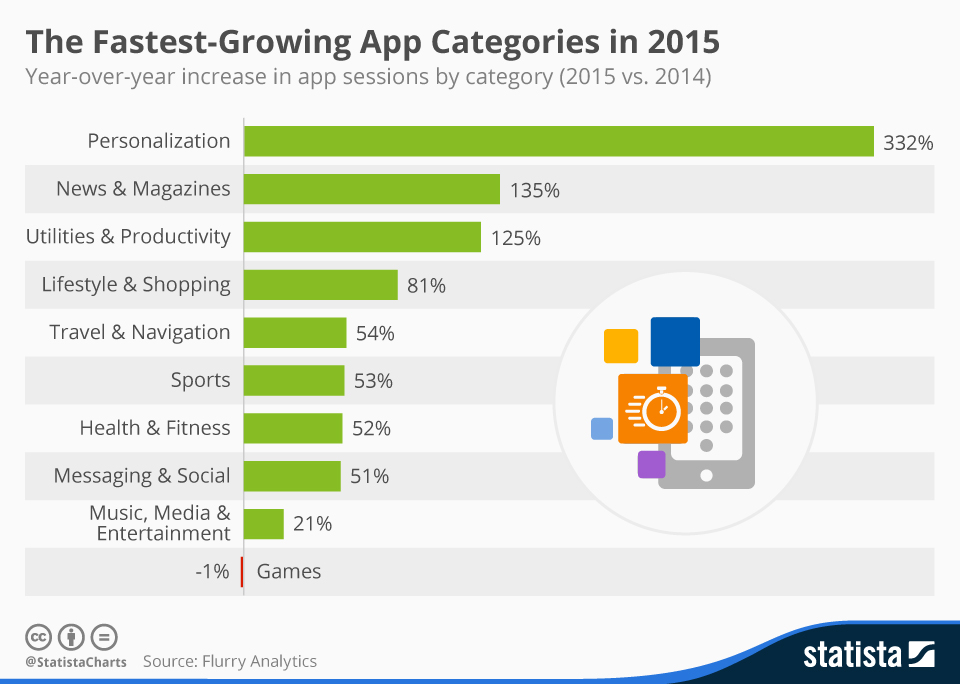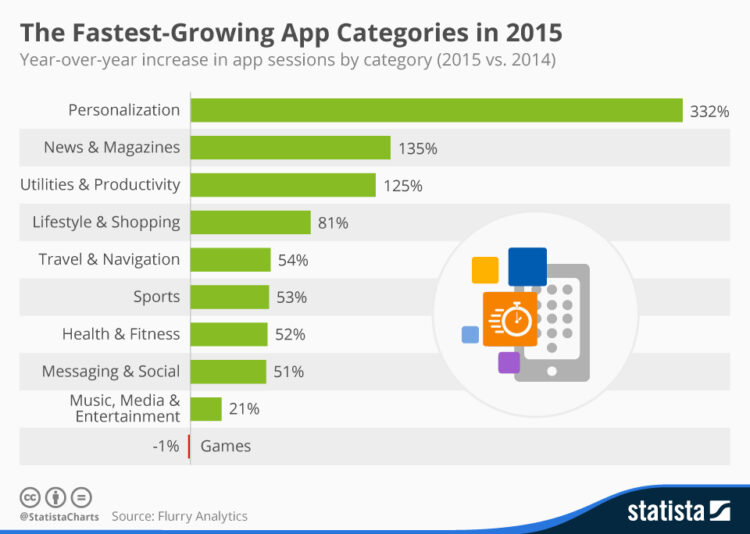
In the digital era, there is unprecedented opportunity to connect technology to create meaningful consumer experiences. Global app usage increased by 50% in 2015. App sessions (the number of times a user opens an app) increased by 332% in the personalization apps category.
The mobile-first philosophy is no longer just a fad, and mobile is no longer just a channel. Mobile success is now synonymous with business success. Business avenues to a mobile presence are to build, partner, buy, or exit.
To capitalize on the trend, it is important to study the origin of mobile. Understanding the motivation of consumers and employees helps ensure mobile success. In the mobile culture, the device is an extension of the self. The device provides ready access to experience context and consumer intent.
There are important distinctions between mobile and laptop/desktop experiences. It appears that personalization propels consumers from mobile websites to native apps. Although the global smartphone user downloads an average of 25 apps, there appears to be a single digit upper limit to the number of apps they use on a regular basis.
- Mobile demands are more complex; speed and quality are both important
- Mobile consumers have high expectations and are less forgiving; a competitor is just a click away
- Mobile experiences offer a faster path to loyalists
Organizers of Designers + Geeks have been bringing the community of approximately 25,000 members together to talk shop since 2010.
At a recent meetup at Spotify‘s New York office, SC Moatti, shared the formula to creating successful mobile products. SC is the author of Mobilized: An Insider’s Guide to the Business and Future of Connected Technology, and has been called by Uber exec and tech guru Andrew Chen “a genius at making mobile products people love.”
SC’s mobile formula aggregates three rules of successful mobile products that can create compelling consumer experiences.
Rule #1: The Body rule ensures operations are beautiful and fun. Beauty is created by focusing on design elements that create efficiency and the wow factor.
SC’s tips on how to create app efficiency.
- Show value before the consumer invests in onboarding
- Have a single task call to action
- Provide one set of simple and fluid navigation per user profile
- Strive for good performance; no crashes, quick loading time
- Use predictable gestures; they are glamorous
SC’s tips on how to create app wow factor.
- For relevant data pulls, ask for permission at the time needed, keeping it transparent and in context
- For meaningful push notifications, continuously validate assumptions because consumer habits change frequently
Rule #2: The Spirit rule provides meaning and creates consumer value. Opportunity lies in harnessing the spirit rule by defining and leveraging
- Mobile etiquette; no clear definition currently exists
- Internal filters; providing hyper-personalized connection of people and places
- External filters; connecting communities while balancing privacy, popularity, and permission concerns
Rule #3: The Mind rule seeks to adapt the product as we learn how it is used. Two types of tools are needed for a complete understanding of product usage.
- Scientific tools; fast learning using goals and funnels
- Artistic tools; slower learning using hooks, shortcuts, and layers


